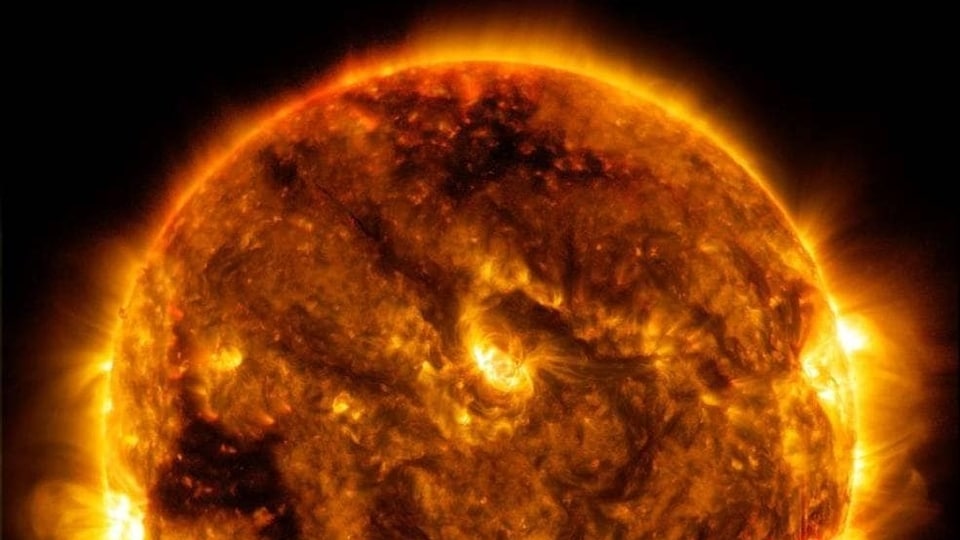NASA missed dangerous solar flares! But India's Chandrayaan 2 finds it
In an amazing turn of events, even though NASA missed a dangerous solar flares, India's ISRO detected it, courtesy Chandrayaan 2 orbiter.

Even as ISRO is preparing for the launch of Chandrayaan 3, its predecessor Chandrayaan 2 is delivering extremely valuable inputs, which can even save the Earth from some dangerous events. This time, it detected dangerous solar flares being shot out from the Sun that even the otherwise super-efficient NASA failed to spot. Recently, Chandrayaan 2 Orbiter detected solar protons via its large area Soft X-Ray Spectrometer. The solar protons are responsible for increased radiation exposure to humans in space. ISRO has revealed that the instrument on January 18 recorded CME (Coronal Mass Ejections), which are the massive solar particle eruptions due to intense flares from the sun. CME fire an abundance of plasma, gases, and magnetic fields out into space, often from the Sunspots which are lumps in the Sun's magnetic field.
These CME travel at amazing speeds of even 1000 kilometers per second and these can reach Earth in around two to three days, providing very little warning to astronomers and scientists to prepare and warn everyone about it. Fortunately, not all solar flares travel as fast and generally take over a day or two to reach Earth. These solar flares often have the ability to cause ionisation in the atmosphere of the Earth, which is responsible for the mesmerizing auroras. However, when some really powerful solar flares hit the Earth's atmosphere, they have the power to knock out satellites, Internet, electricity and even mobile phone connectivity. Considering that everything on Earth is now dependent on electricity and Internet, it will disable medical and other systems causing massive destruction in terms of human lives and infrastructure. A really strong solar flare is expected by some researchers to hit Earth over the next decade.
What Chandrayaan-2 orbiter has found
ISRO revealed that there were two M-class solar flares. One of them, the M5.5 released particles into interplanetary space whereas the other M1.5 was accompanied by a Coronal Mass Ejection. NASA's Geostationary Operational Environmental Satellite also spotted this solar flare but missed the CME event which was spotted by the Chandrayaan 2 orbiter. When the Sun is active, spectacular eruptions called solar flares occur that sometimes also throw out energetic particles into interplanetary space. The solar flares are classified into four classes - A, B, C, M, and X based on their intensity. So the most powerful solar flare would be an X-classified solar flare while M denotes the second most powerful solar flare. Further, the numeric associated with it signifies its strength.
About Chandrayaan-2 orbiter
Chandrayaan-2, the second lunar exploration mission of the Indian Space Research Organisation (ISRO) was launched back on July 22, 2019. And the orbiter was the part of this mission that is supposed to land the Vikram Lander on the South Pole of the Moon. Unfortunately, the landing did not go according to plan. Still, ISRO later revealed that the mission had achieved almost 98 percent success because the orbiter is sharing crucial information with the ground station on Earth, such as this recent solar flare detection.
Catch all the Latest Tech News, Mobile News, Laptop News, Gaming news, Wearables News , How To News, also keep up with us on Whatsapp channel,Twitter, Facebook, Google News, and Instagram. For our latest videos, subscribe to our YouTube channel.
































